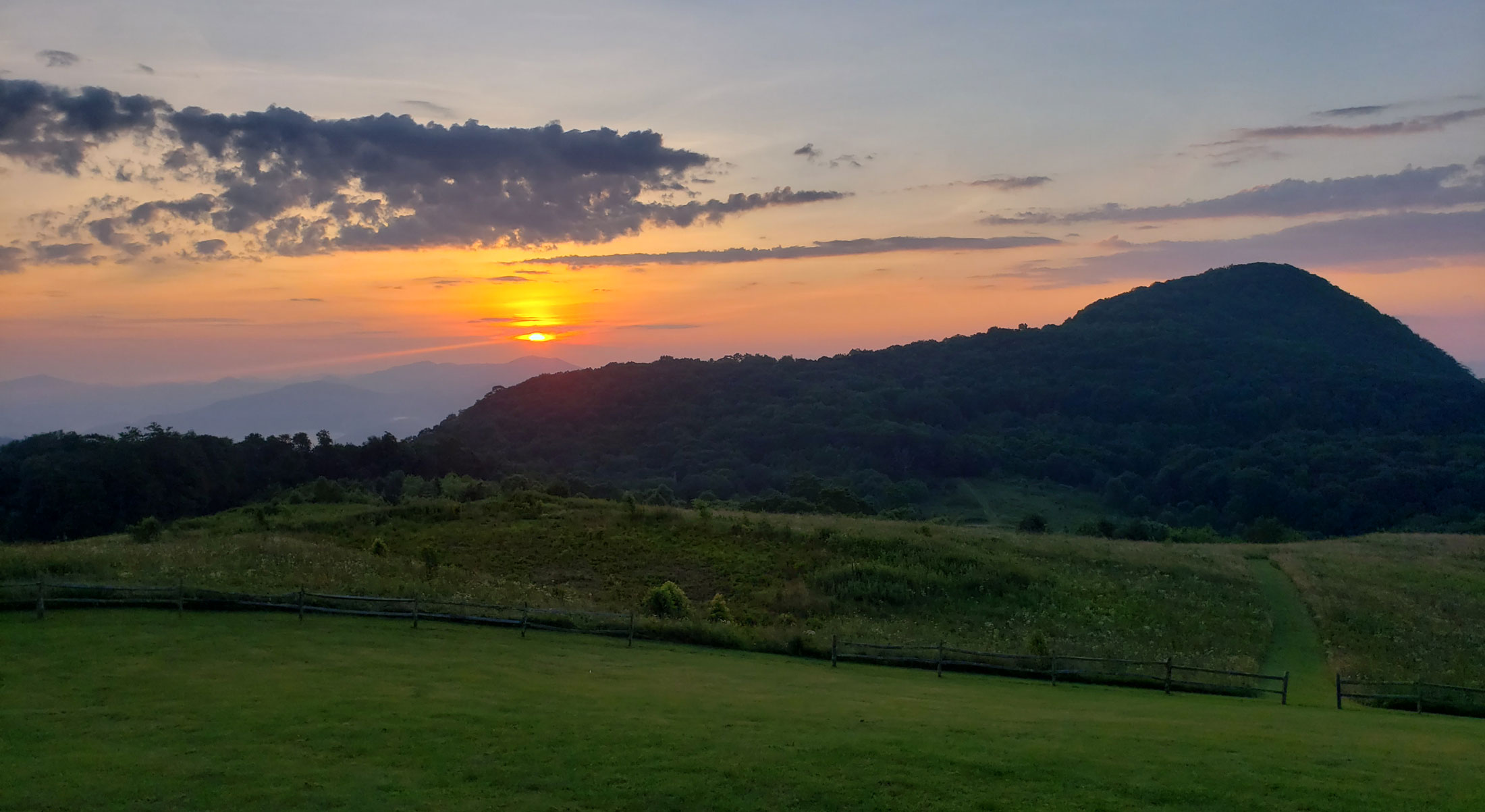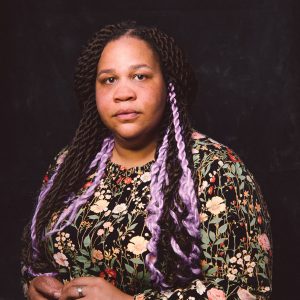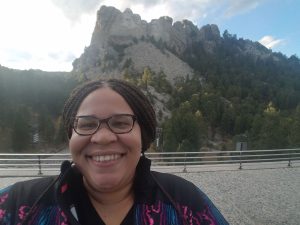
When Latria Graham logged onto a lunchtime Zoom call on January 3, no part of her was expecting to hear that she’d been selected for one of American journalism’s most prestigious awards. She figured the conversation with the Heising-Simons Foundation representative was meant to bolster another nominee for the American Mosaic Journalism Prize.

Then she learned she’d won the award—and the $100,000 that went along with it.
“I was just so shocked,” she said. “It was like my world split in half.”
The news wouldn’t become public for another month, so Graham couldn’t share it with anybody right then. She slow-blinked a few times, closed her laptop, and wrenched herself back into work mode. She was on a reporting trip when she took the call, and she had multiple interviews scheduled for the evening.
The American Mosaic Journalism Prize is awarded annually to recognize excellent in-depth reporting about underrepresented or misrepresented groups in the United States, and Graham’s work fits neatly under that umbrella. Her writing is heavily influenced by her perspective as a Southerner, a member of a farming family, and a Black woman, seeking to lift up voices and stories that might otherwise be overlooked.
In recent years, her work has also been shaped by a deepening love for the Great Smoky Mountains. Graham was one of two writers selected for the inaugural Steve Kemp Writer’s Residency in 2019, which Smokies Life hosts inside Great Smoky Mountains National Park. It was a seminal experience.
“I got to stay at the Appalachian Highlands Science Learning Center at Purchase Knob and watch the sunrise, and there’s just nowhere like it,” she said. “I’ve traveled the world at this point, and it’s still in my top five. It’s probably in my top three.”

Despite growing up outside of Spartanburg, South Carolina, just three hours from the national park, Graham had never been inside it prior to her residency. She is a fifth-generation member of a farming family and from an early age absorbed an intimate understanding of the rhythms of the seasons, the need for balance in the natural world, and the relationships between pests, crops, and native species. But when she traveled with her dad to Cherokee, North Carolina, to research her master’s thesis in 2012, they decided not to drive into the Smokies.
“We turned around because we didn’t know how it worked,” she said. “Nobody we knew had ever been into that park, and we were more scared of getting in trouble or not knowing where to go, or not having maps—this was the early days of GPS—so we just turned around.”
Her dad passed away in 2013, without ever visiting the Smokies.
Graham saw the writer’s residency as an opportunity to find out what the national parks are all about—and to become better acquainted with the proper names of the native plants and animals in her home region. Since 2019, Graham has made it a point to visit as many national parks as she can. She works to inform her journalism with specific details about the species present in the places she’s writing about and why it’s important to ensure they remain there.
The experience also encouraged her to be more vocal about issues impacting Black people’s access to the outdoors. Prior to the residency, she’d published a piece in Outside Magazine exploring why Black people are less likely than their White counterparts to visit the national parks. Some of it concerns proximity—where the national parks are located in relation to areas of higher Black populations—but there are other factors as well.

“After 2020 I wrote another piece talking about some of the scarier incidences I had in the park and what that meant,” she said. “People ask me questions about safety, agency, and where to go, and I try to be honest with them, and I was honest with them about the Smokies. I consider that my home park, but just because I consider it my home park and I love it a great deal doesn’t mean it’s always safe for me or that it’s always kind to me, and I think we need to start having those conversations.”
In the 2020 story, titled “Out There, Nobody Can Hear You Scream,” Graham writes about the jarring sight of Confederate and Gadsen flags flapping in the wind on properties surrounding the park, and of the jarring absence of historical information about the Black communities that once existed within the current park boundary.
“Vacations are meant to be methods of escapism,” Graham writes. “Believing this idyllic wilderness to be free of struggle, of complicated emotions, allows visitors to enjoy their day hikes. Many tourists to GSMNP see what they believe it has always been: rainbow-emitting waterfalls, cathedrals of green, carpets of yellow trillium in the spring. The majority never venture more than a couple of miles off the main road . . . they aren’t hiking the trails that pass by cemeteries where entire communities of white, enslaved, and emancipated people lived, loved, worked, died, and were buried, some without ever being paid a living wage.”
Winning the prize will allow Graham to tell more of the stories she believes the world still needs to hear. Though she intends to use some of the money to treat herself to “a real vacation”—she’s mulling a few nights at The Swag just down the ridge from Purchase Knob—she’s also planning to put it toward telling stories that are too expensive or complex to report under a standard freelancing agreement.

This summer, she’ll visit several national parks in Alaska and then to return to her home region to follow the Trail of Tears, the route used to forcibly remove multiple Native American tribes from their lands in the Southeast to an unfamiliar landscape in Oklahoma. Graham will also retrace the entire 1803–1806 Lewis and Clark Expedition, which passed through many present-day national parks from the Atlantic to the Pacific Ocean, so that she can relate the journey through the eyes of York, a man who traveled the entire route as a slave of Captain William Clark.
“I pitched this story for the first time back in 2018, but it’s so expensive and so time-consuming that most magazines that were capable of picking it up wouldn’t, so now I get to do that,” she said. “I know it will find a home once I’ve done it, but I need to know what the story is in a way that you have to have done the trip to know where you’re going with it.”
The prize is changing her life already, and she knows it is likely to bring more surprises as time goes on. For that, she’s grateful—both for her own sake and for that of the mountains she loves.
“I hope that I am remembered as someone who loves this region and the people in it,” she said. “That is why I am here and why I stay and tell these stories.”
Subscribe to get the latest posts sent to your email.
The Great Smokies Welcome Center is located on U.S. 321 in Townsend, TN, 2 miles from the west entrance to Great Smoky Mountains National Park. Visitors can get information about things to see and do in and around the national park and shop from a wide selection of books, gifts, and other Smokies merchandise. Daily, weekly, and annual parking tags for the national park are also available.